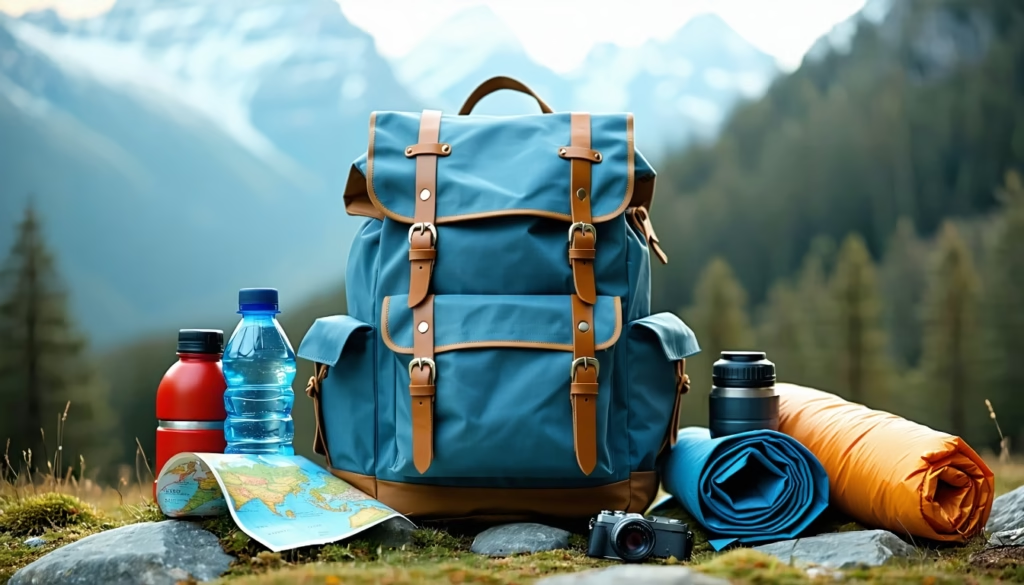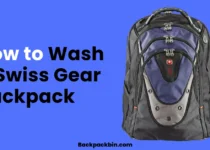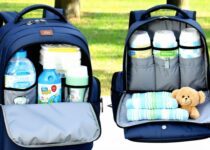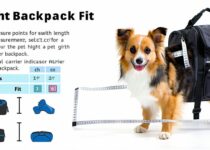How To Choose The Right Volume (30-50 L) For A Weekender Backpack

Ever stared at a mountain of travel gear and wondered how it’ll all fit? We’ve been there, juggling outfits, chargers, and extras like we’re conducting a circus act. Getting the right weekender backpack volume isn’t just about cramming more stuff in—it’s about balance, comfort, and peace of mind.
In this guide, we’ll walk you through everything you need to pick a pack between 30 and 50 liters. You’ll learn what capacity really means, which features to weigh, and how to test-drive your choice before hitting the road. By the end, you’ll know exactly how much room you need without hauling around dead weight.
Understand Volume And Capacity
Choosing a bag with the right interior size starts with understanding what volume measures and why that 30–50 L range works for most weekenders.
What Is Backpack Volume?
Backpack volume refers to the total space inside your pack, typically expressed in liters. It’s calculated by measuring the width, height, and depth of each compartment and adding them up. That number gives you an idea of how many clothes, shoes, and gadgets you can squeeze in without straining zippers or seams.
Why 30–50 Liters Works
- 30–35 L: Ideal for ultralight travelers or carry-on purists who pack just the essentials
- 36–45 L: Sweet spot for most weekend trips, balancing gear variety with manageable size
- 46–50 L: Great for slightly longer excursions or if you need extra layers and equipment
Going under 30 L often means ruthless minimalism, while over 50 L can tip into bulky territory. Sticking within this window helps you avoid overweight fees and awkward overspill.
Consider Your Travel Style
Your packing personality plays a big role in picking capacity. Are you a minimalist or someone who loves options?
Trip Duration And Packing
- Day-to-Day Essentials: If you’re gone 2–3 nights, a 30–40 L pack usually has your back
- Mixed Activities: For hiking by day and dinners out by night, lean toward 40–50 L
- Gear-Heavy Plans: Cameras, workout gear, or specialty equipment often push you above 45 L
Packing Preferences
Do you like rolling clothes into neat bundles or tossing everything into a big clamshell opening? Your system might demand more room or better organization. If you’re a meticulous packer, compartments matter more than raw capacity.
Balance Weight And Comfort
A full pack isn’t much fun to carry if it makes your shoulders ache. Here’s how to keep things light and comfy.
Backpack Weight Considerations
Even an empty 50 L pack can weigh 2 to 4 pounds. Factor that into your loadout. If your bag is 4 pounds empty, you’ve effectively “lost” 4 pounds from your usable capacity. Look for lightweight materials and minimal frame structures to shave off ounces.
Strap And Support Systems
A robust suspension system prevents strain and stabilizes the load. Key features include:
- Padded shoulder straps with adjustable height
- Breathable back panel for airflow
- Hip belt to transfer weight off your shoulders
- Sternum strap to pull the load closer to your torso (see sternum strap backpack)
These elements make every liter of capacity feel easier on the body.
Explore Key Features
Size isn’t everything. Design details can transform a good pack into a great one.
Clamshell Vs Top-Loader
Benefits Of Clamshell Opening
- Full-width access lets you see all contents at once
- Easier to pack with organized cubes
- Great for tech gear and camera equipment
Top-Loader Characteristics
- Simpler construction, often lighter
- Better water resistance because fewer seams
- Fits like a classic hiking pack
Choose the style that matches your packing workflow.
Expandable And Modular Designs
Some packs grow when you need more room. An expandable weekender backpack adds 5–10 L via zip-away sections. Modular attachments like detachable pouches let you customize for camera gear or gym clothes. If you value flexibility, these options can save you from “why didn’t I bring more space?” panic.
Test Packing Organization
A 45 L pack full of tangled gear can feel smaller than a neat 35 L bag. Organization tricks help you maximize every inch.
Using Packing Cubes
Packing cubes keep items compressed and grouped. You’ll know exactly where your socks or chargers live. If you haven’t tried them, packing cubes in backpack can cut your packing time in half and free up extra liters.
Access Points And Compartments
Think about how you grab stuff on the go. Side pockets for water bottles, a front stash pocket for snacks, and internal mesh sleeves for documents all save you the shuffle. Pockets that line the bag walls prevent dead corners.
Shoe And Tech Sections
Some packs include dedicated shoe compartments or padded sleeves for laptops and tablets. While you could tuck your shoes anywhere, a built-in shoe pocket keeps dirt away from clean clothes. And a tech sleeve speeds you through airport security.
Compare Materials And Durability
What your pack is made of tells you a lot about how it will perform on the road.
| Material | Weight | Durability | Care | Ideal Use |
|---|---|---|---|---|
| Canvas | Medium | High, ages well | Spot clean | Casual, style-driven |
| Nylon | Light | Excellent abrasion resistance | Wipe down | Active, water-prone trips |
| Leather | Heavy | Very durable, patinas | Leather conditioner | Business or style-focused travel |
For deeper insights, check out canvas vs leather vs nylon backpack.
Weather And Water Resistance
Rain can turn your getaway into a soggy mess. Look for packs with:
- Coated fabrics or DWR (durable water repellent)
- Sealed seams and water-resistant zippers
- Removable raincovers for light showers
A waterproof weekender backpack keeps your gear dry without weighing you down.
Evaluate Extra Benefits
Once you nail capacity and core features, these extras can tilt the scales.
Tech Integration
USB charging ports, headphone pass-throughs, and padded device sleeves let you stay connected. If you’re a digital nomad, a pack with built-in cable routing and easy-access pockets is a game changer. Explore models with tech in weekender backpack features for smooth gadget handling.
Security And Access Features
Lockable zippers, RFID-blocking pockets, and hidden compartments help deter pickpockets. If you travel through crowded transit hubs, a secure weekender backpack provides extra peace of mind.
Convertible And Carry-On Features
Want to switch between backpack and duffel styles? Convertible bags offer multiple carry options. And if you’re a frequent flier, make sure your pack ticks carry-on size limits by checking a carry-on weekender spec sheet before you buy.
Finalize Your Choice
You’ve weighed capacity, features, and extras. Now it’s time to lock in the best option.
Budget And Value
Set a realistic budget. Higher price often means premium fabrics and warranties. But there are solid budget-friendly packs below 50 L that won’t fall apart after a few trips.
Sustainable Options
Eco-friendly materials and ethical manufacturing practices matter more these days. Brands offering recycled fabrics or carbon-neutral production may cost a bit more but give you lasting quality and lower environmental impact.
Trial Runs And Returns
Before you commit, do a practice pack. Load up your gear and take a walk around the block, or hop on public transit to test comfort and access. Confirm the return policy—no one wants to wrestle with customer service if the fit isn’t right.
Frequently Asked Questions
-
What exactly does 30–50 L volume cover?
It’s the internal space in liters—enough for 2–5 days of gear, depending on how you pack. -
Can I use a 30 L bag for longer trips?
Sure, if you pack ultra-light and plan to do laundry. But most travelers find 40–45 L more flexible. -
How much does an empty weekender pack weigh?
Typically between 2 and 4 pounds. Lightweight nylon models can weigh under 2 pounds, while leather or canvas options run heavier. -
Are packing cubes really worth it?
Absolutely. They compress clothes, keep things organized, and make it easier to find what you need. -
What’s the difference between water-resistant and waterproof?
Water-resistant fabrics shed light rain, while waterproof materials and sealed seams withstand heavy downpours. -
Should I prioritize features over capacity?
Balance is key. A spacious bag without good support or organization can feel smaller than a well-designed pack with slightly less volume. -
How do I know if a pack meets carry-on requirements?
Check airline size limits and compare them to the bag’s external dimensions—many 40 L backpacks are carry-on friendly. -
What if I need more space mid-trip?
Consider an expandable model, which often adds 5–10 L via zip-away sections. -
How can I keep my back cool when carrying a full pack?
Look for breathable mesh panels in the suspension system, and consider a bag with ventilated channels.
We hope this guide helps you zero in on the perfect capacity and features for your next weekend escape. Give yourself the gift of a pack that fits your gear and your lifestyle, so you can focus on the adventure ahead.
Ready to shop with confidence? Share your findings or favorite pack tips in the comments below so fellow travelers can benefit too.


